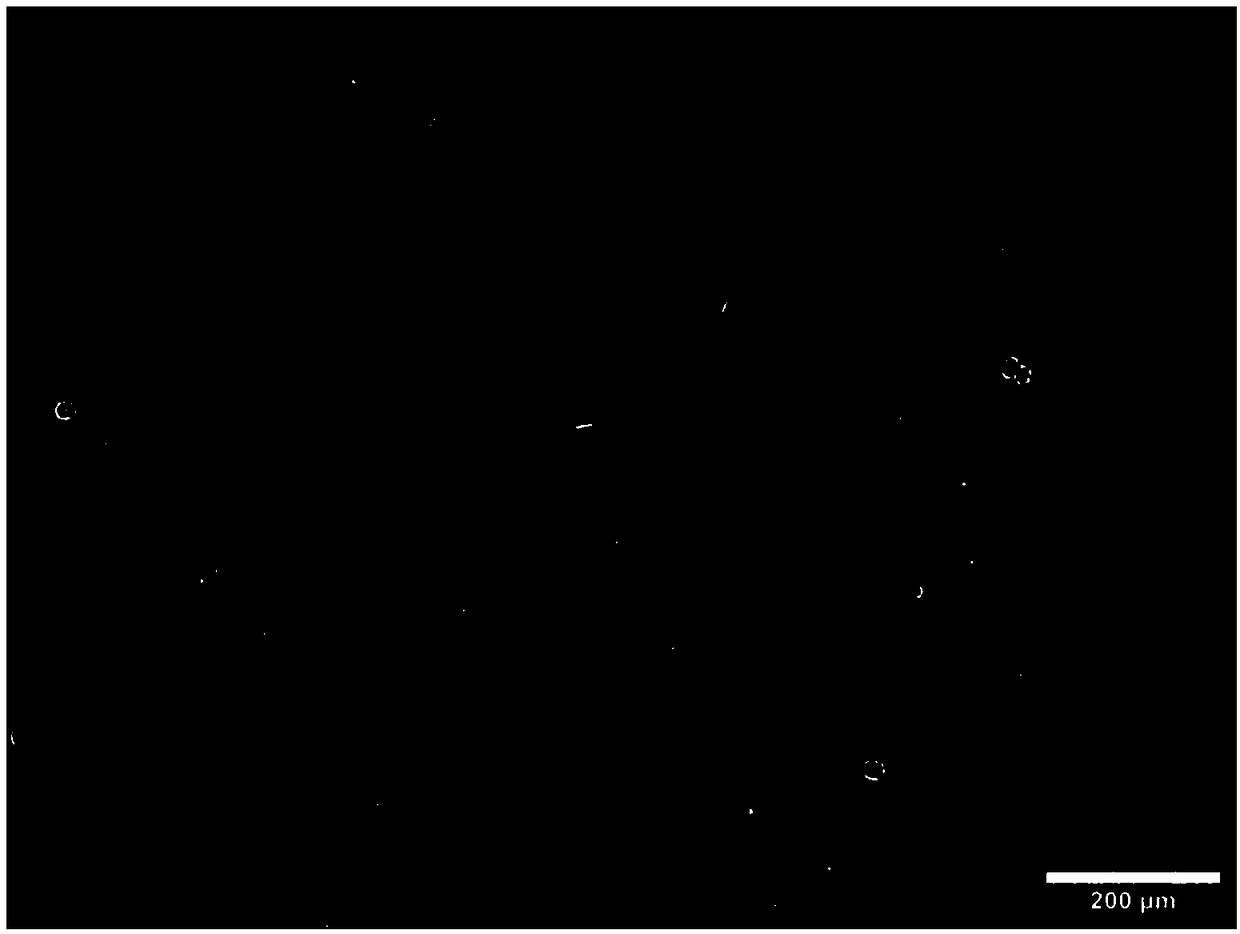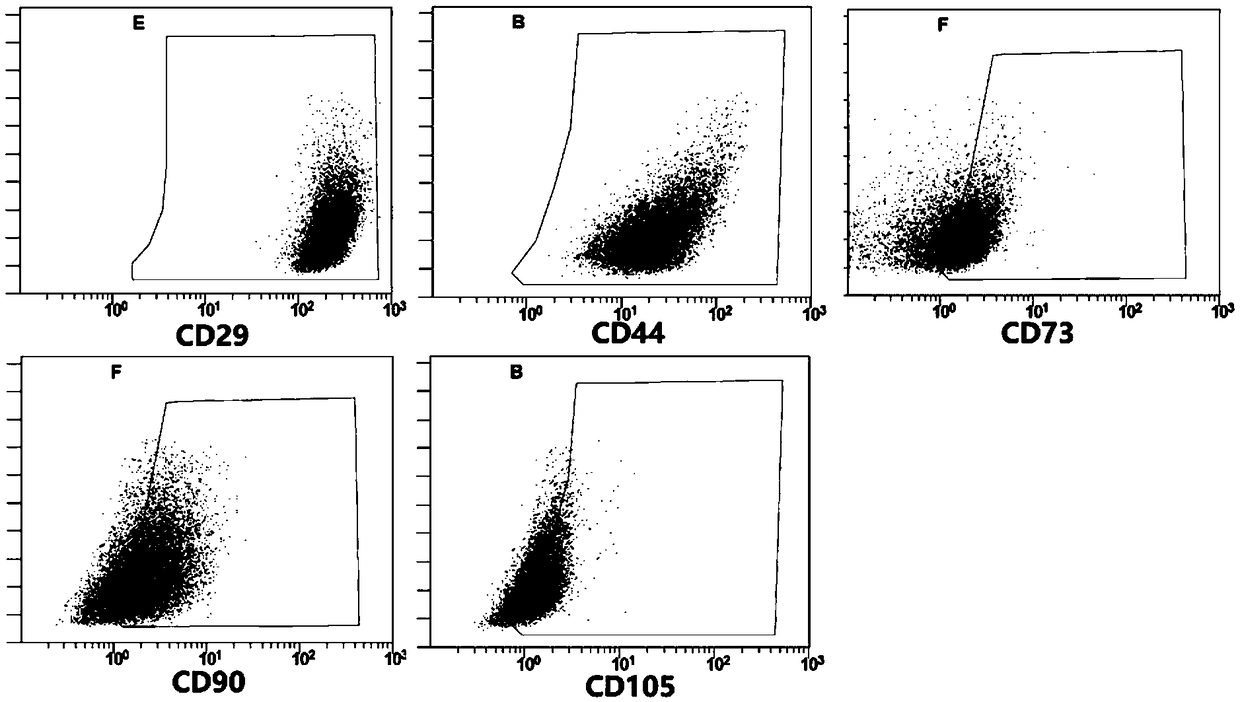Diabetes ulcer repair material and method for preparing same
A technology for diabetic ulcers and repairing materials, applied in the field of repairing materials for diabetic ulcers and their preparation, can solve the problems of complicated material preparation process, easy infection of wounds, limited cell sources, etc., achieves good biocompatibility, promotes Wound healing, wide-ranging effects
- Summary
- Abstract
- Description
- Claims
- Application Information
AI Technical Summary
Problems solved by technology
Method used
Image
Examples
Embodiment 1
[0178] Example 1 A method for preparing a repair material modified with extracellular matrix for diabetic ulcers
[0179] 1. Primary culture and cryopreservation of USCs
[0180] (1) Primary culture: take 50-250mL of urine from healthy ordinary people, put it into 50mL centrifuge tubes, centrifuge at 400g for 10min in a centrifuge, discard the upper layer of urine on a clean bench, add 40mL containing 1 % double antibody in PBS, mixed with the bottom urine, and centrifuged at 400g for 5min in a centrifuge. Repeat the step of washing the urine with PBS twice. Discard the supernatant, add 5mL USCs complete medium to resuspend the cells at the bottom of the centrifuge tube, then pipette the cell suspension into a T25 culture flask, and place it at 37°C containing 5% CO 2 Cultivate in the incubator, and observe whether there is pollution regularly in the first two days; replace the medium after cell clones appear.
[0181](2) Cryopreservation: USCs cells grown to about 70%-80% ...
Embodiment 2
[0199] Example 2 A method for preparing a repair material modified with extracellular matrix for diabetic ulcers
[0200] 1. Primary culture and cryopreservation of USCs
[0201] Same as Example 1.
[0202] 2. Preparation of SIS
[0203] Same as Example 1.
[0204] 3. Cell inoculation
[0205] Same as Example 1.
[0206] 4. Decellularization of USCs-SIS composites
[0207] Triton X-100 combined with DNase I treatment: the SIS co-cultured with USCs for 7 days was taken out, washed 3 times with PBS, 2 min each time, the USCs-SIS composite material was placed on a shaker and washed with 0.5% Triton X-100 solution for 5 min, Then place the USCs-SIS composite material on a shaker and rinse with 100 U / mL DNase I solution for 5 minutes, and finally wash with deionized water for 5 minutes. The above steps are repeated 3 times, and the last wash is 30 minutes. , namely the extracellular matrix-modified repair material (D-USCs-SIS).
experiment example 1
[0218] Experimental Example 1 Identification of USCs
[0219] (1) Morphological characteristics of USCs
[0220] 1. Experimental method
[0221] During the primary culture of USCs, multiple centrifugation methods are used. About 3 to 14 days after inoculation, individual cells can be observed to adhere to the wall, usually 1 to 3 cells adhere to the wall, and the cells that do not adhere to the wall are suspended in the medium. The adhered cells continued to proliferate and formed densely arranged cell colonies in about 10 days. When the cells are fused to 80%, the cells are subcultured with TNE at a ratio of 1:3 / 4. After about 3 to 4 days, the cells reach a state of complete confluence, and can continue to be subcultured. After the USCs passed to the third generation, their morphological characteristics were observed by optical microscope.
[0222] 2. Experimental results
[0223] The morphological characteristics of USCs after passing to the third generation are as follo...
PUM
 Login to View More
Login to View More Abstract
Description
Claims
Application Information
 Login to View More
Login to View More - R&D Engineer
- R&D Manager
- IP Professional
- Industry Leading Data Capabilities
- Powerful AI technology
- Patent DNA Extraction
Browse by: Latest US Patents, China's latest patents, Technical Efficacy Thesaurus, Application Domain, Technology Topic, Popular Technical Reports.
© 2024 PatSnap. All rights reserved.Legal|Privacy policy|Modern Slavery Act Transparency Statement|Sitemap|About US| Contact US: help@patsnap.com










